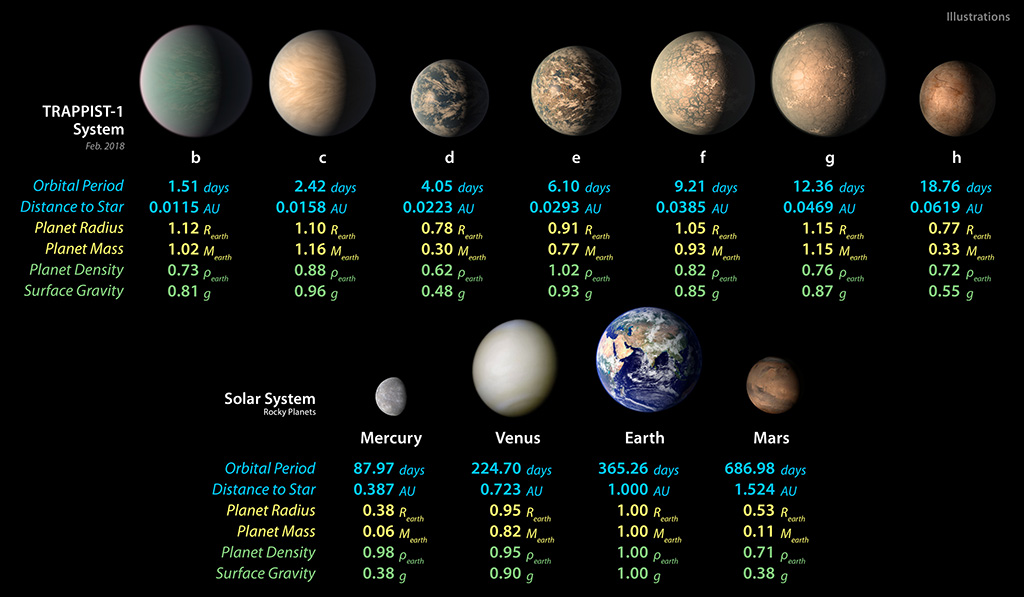Water worlds
Last year’s discovery of a bunch of new Earth-sized planets clustered around an ultracool dwarf star (yep, that’s a thing) was an exciting one for space scientists. It brought the total number of known planets in the TRAPPIST-1 system to seven, and seemed to be one of our best shots at finding potentially habitable worlds beyond Earth.
Now, new research published in Astronomy & Astrophysics has given scientists an even better look at what these exoplanets (planets orbiting a star outside of our own solar system) are made of. Researchers from the University of Bern, Switzerland, were able to apply complex computer modelling methods to determine the TRAPPIST-1 planet densities with much greater precision than they could before.
Why is planet density important? Without it, it’s hard to estimate what a planet is made of, or how it might have formed. More precise density information means that scientists can make better predictions about the composition of each planet in the TRAPPIST-1 system—and whether they might be able to support life.
As a planet passes in front of its star (called a transit), telescopes can detect and measure how much the star’s light dims and determine the planet’s radius and size. To calculate the planets’ densities, scientists took advantage of what’s known as ‘transit timing variations’. The planets of TRAPPIST-1 are packed so closely together that they gravitationally interfere with the timing of each other’s orbits. Scientists can use these variations in orbit timing to get an estimate of a planet’s mass, and once you have size and mass, you can calculate density.

So, what do we know now about the TRAPPIST-1 planets?
Well, some of them are wet. Very wet. All the planets are mostly made of rock, but some could be up to 5% water by mass—that’s 250 times more water than all the oceans on Earth. For planets closer to their central star, this water is likely to exist in the form of atmospheric vapour, while those further away probably have lots of frozen surface ice. The planets’ distances from the star also have an impact on their atmospheres, with thick and steamy atmospheres on the innermost planets, and thin atmospheres on those further away.
We also know that all of the TRAPPIST-1 planets have elliptical (egg-shaped) orbits, causing the planetary cores to bulge and stretch as they whiz round their star. This phenomenon, called tidal heating, generates internal heat, resulting in a planet with potentially balmy surface temperatures and increasing the chances of liquid water being present.
The fourth planet in the system, TRAPPIST-1e, is the most similar one to Earth in terms of its density, size, and amount of radiation it receives from its star. Question is, could we live there?
It’s impossible to say at this point, as there’s still so much we don’t know about these new worlds. Although density can tell us a lot about what a planet’s made from, it doesn’t tell us anything about whether it’s habitable or capable of supporting life. This research, however, is a step in that direction.
Let’s hope for even more exciting discoveries about TRAPPIST-1 soon.





